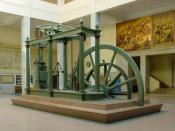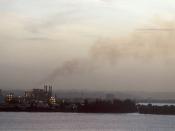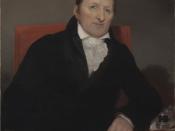During the 1700s and the 1800s, innovations in agriculture and industry led to great economic and social changes throughout the United Staes and Europe. Urban industrial economies were born in these areas and eventually spread around the world. This transformation, which is know as the Industrial Revolution, began when power-driven machinery in factories replaced work done by people; changing the way people have worked and lived for hundreds of years. As entrepeneurs brought machines and workers together in factories, industries mass produced goods. Millions of people looking for new opportunities to make living left villages to find factory work in growing cities. A new era of mechanization had arrived.
Basically, all rural villagers were farmers. Wealthy landowners controlled most of the land, renting the majority of it to small farming families. This ensured both fair land distribution and economic protection should something happen in one of the fields. In most of the villages, private or public land were not fenced off.
The public land, called the village commons, were mostly woodlands, pasture and less fertile land. The richest landowners lived on beautiful country estates with a huge main house, cottages, several barns, and big fields. Landowners and their families lived adequately, while servants took care of the houses and meals.
The worker's houses were usually close to the factories so that people could walk to work. They were built really quickly and really cheaply. Most had between 2-4 rooms. There was no running water or toilet. A whole street would have to share and outdoor water pump and a couple of toilets. Most houses in england were built in double rows with no windows in the front, no backyards and a sewer down the middle of the street. Most of the houses were crowded with 5 or 6 people...


